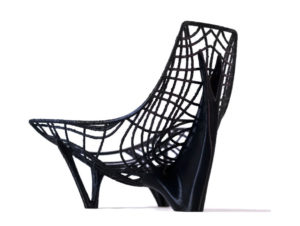Manufacturing leads all other efforts to improve our standard of living, and UT is leading the way with scholarship and research through the launch of the UT Institute for Advanced Materials and Manufacturing.
Headquartered in the UT Research Park at Cherokee Farms, the institute reflects the vision of Vice Chancellor for Research Deborah Crawford for UT to take an increasingly interdisciplinary approach to tackling real-world problems.
More than 160 faculty are working in advanced materials and advanced manufacturing as well as students, industry partners, and government agencies. Both UT and the institute draw strength from being located in an innovation hub that includes nearby Oak Ridge National Laboratory, workforce training and development initiatives with nearby community colleges, and the many companies that have established a presence in East Tennessee.
“IAMM represents the future of fundamental and applied research at UT, with efforts spanning the disciplines of chemistry, computer science, engineering, physics, design, architecture, agriculture, and more,” said Crawford. “Our partnerships with industry, who can co-locate with our faculty and students in our mixed-use facilities, power the engine that drives economic opportunity in Tennessee and far beyond.”

Teams are supported by the institute’s 140,000 square feet of state-of-the-art laboratory and collaboration spaces, with more facilities to be added in the next few years. Additional work is happening throughout UT, including the UT Institute of Agriculture and the UT Space Institute, taking advantage of the university’s varied facilities and capabilities.
“Our goals are to create a broad tapestry of researchers not constrained by a physical location while creating opportunities for collaborations with industry partners, national labs, and other universities, colleges, and K–12 partners,” explained the institute’s Interim Director Jon Phipps.
Take, for example, the ongoing work of Assistant Professor of Design and Structural Technology Maged Guerguis and UT-ORNL Governor’s Chair for Advanced Composites Manufacturing Uday Vaidya. Drawing inspiration from nature, the pair are using robotic fabrication methods to design new high-performance structures and develop new 3D-printed prototypes which are stronger and lighter in weight than conventional construction systems.
Through engaging with the cities of Knoxville and Oak Ridge, they are applying their work to create designs for sustainable buildings on abandoned sites as well as entire net-zero communities. Their research has the potential to transform current construction practices by taking the first step toward a novel, fully integrated approach to construction driven by the material economy.
Projects underway with other teams include enabling doctors to 3D-print body parts during a surgical procedure, designing building materials infused with high-efficiency solar panels, improving the circular economy by exploring ways to improve efficiencies in recycling, and designing materials more suited to using recycled materials as feedstock.

